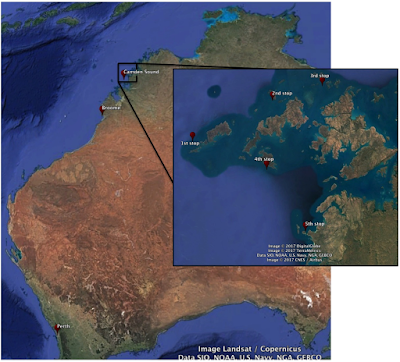A few weeks ago, completely out of the blue, I was invited to join a research trip to Camden Sound to take water chemistry samples. Why am I being asked to do water chemistry? I’ve been in search of water chemistry data for the Kimberley to help provide a context for my otolith geochemistry results. Otolith geochemistry is based on a number of assumptions and one assumption is that the water chemistry at each sampling site is constant, so any changes we see in otolith chemistry is due to movement of the fish rather than changes in the water. The Kimberley region has some of the highest tides in the world (comparable to the Severn!). It’s also a tropical environment with the year divided into wet and dry seasons which suggests, to my inexpert mind, that the water chemistry may be quite variable over all sorts of time scales. To try and see if this is the case I’ve been emailing all sorts of people in various institutions in Western Australia to try and get water chemistry data,


